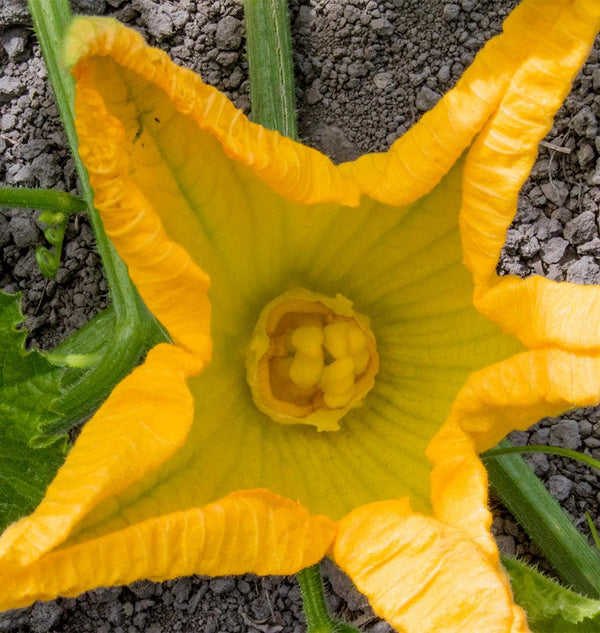Support Food Banks Canada with every dollar spent — 15% sales donated from Black Friday to Cyber Monday.
Time remaining:
Time remaining:

Where bees are scant, or in settings like balconies that cannot accommodate flowers to attract bees, hand pollination is another option. The principle is fairly straight forward: Pollen is transferred from the open male flower to the stigma of the open female flower. At this point, the male flower can even be removed and dissected, as it is not going to be feeding any bees or serving the plant.
Continue ReadingWith pollinator conservation in mind it’s a good idea to plant flower seeds for bees. But which are the best pollinator plants? Which bee flowers are the easiest to sow and grow? What flowers can be grown in containers or...
Continue ReadingDill (Anethum graveolens) This well-known herb has been cultivated since at least 3000 BC by the ancient Babylonians and Assyrians, and is mentioned more than once in the Bible. Dill was thought by medieval writers to provide protection from evil...
Continue ReadingPurple Tansy is the common name for one of the garden’s supreme workhorses, Phacelia tanacetifolia. Gardeners who have had trouble with fruit setting on squash, melons, or cucumbers need to learn how to improve pollination with Phacelia. Phacelia is a...
Continue ReadingAlthough they arrived from Europe, they’re well at home now in BC’s Lower Mainland and many other regions. This lively beetle (Amphimallon majalis) has an annual life cycle that is worth understanding in an attempt to control it. The beetle...
Continue ReadingWest Coast Seeds has conducted significant research into the companion planting guidelines and has defined the best possible results and reasons for each of our recommendations in our companion planting chart, below are a few thoughtful suggestions for you while planning your garden this year.
Continue ReadingHedgerows provide important cover for mammals, from voles to coyotes, and create a natural corridor to cross the property in relative safety. The shrubs provide excellent nesting sites for songbirds, and the tall trees (eventually) provide much needed nesting spots for raptors. We are so pleased to add this feature to our organic field.
Continue ReadingThe wildflower seeds in our Knee High Meadow Blend produce a waist-high field of brilliantly coloured flowers that bloom over a very long period from spring to fall. This blend is best for areas that will be protected from foot...
Continue ReadingThe Biodiversity Blend provides the widest, most diverse combination of flower types in any of our wildflower blends. There are flowers to tempt every sort of pollinator, but particularly butterflies, wild bees, and hummingbirds. Several species are included that produce...
Continue ReadingHere is a blend of flowers native to eastern North America that are adapted to survive the sometimes shifting weather of the Maritimes, New England, and the St. Lawrence coast. This mix of fourteen showy plants is primarily composed of...
Continue ReadingThis blend of North American native wildflower species was selected for areas with cold winters and hot summers. The ideal region straddles the Rocky Mountains and foothills, from BC’s central interior to Calgary, and from Jasper National Park down to...
Continue ReadingThis is a list of the twenty-one component species of our Great Lakes Wildflower Blend, and it includes annuals, biennials, and perennials. While this blend will grow in nearly any garden, its components are all selected natives to the Great...
Continue ReadingOur Butterfly Blend wildflower ingredients include the following species. These were chosen specifically for their nectar rich flowers to which butterflies are drawn. The type of butterfly attracted to your flower patch will depend on where you live, but this...
Continue ReadingThe plight of the Monarch butterfly has been a big news item in recent times. Just look up “monarch butterfly” on Youtube, and you’ll find scores of videos aimed at Monarch conservation. The Monarch is unusual due to its remarkable...
Continue ReadingGrass is used to fill in an awful lot of public spaces. We think of it as the automatic response to revitalizing just about any building or construction site, and since grasses are so darn tough, they seem to thrive...
Continue ReadingIt’s pronounced “zee-re-scape-ing.” And it’s a key concept for landscapers as we look to a future of water conservation and climate change. It’s worth mentioning again in this series of Twenty-one Days of Green leading up to Earth Day, because...
Continue ReadingWhile recreational field turf has its uses, most urban and suburban lawn leaves the Earth with a net loss. Space that could be used for growing food or feeding pollinators is dedicated instead to demanding, non-native grasses. Lawn grass is...
Continue ReadingWe continue our Twenty-One Days of Green with a look at an amazing community group. One of our favourite of all gardening organizations is Plant a Row Grow a Row. Quite simply, they encourage gardeners to plant one extra row...
Continue ReadingCatnip (Nepeta cataria) This perennial member of the mint family is native from eastern Europe eastward to China. It is a bushy, branching herb that grows to 50–100cm (20–39″) tall. Like many mints, its stems are square in cross section,...
Continue Reading